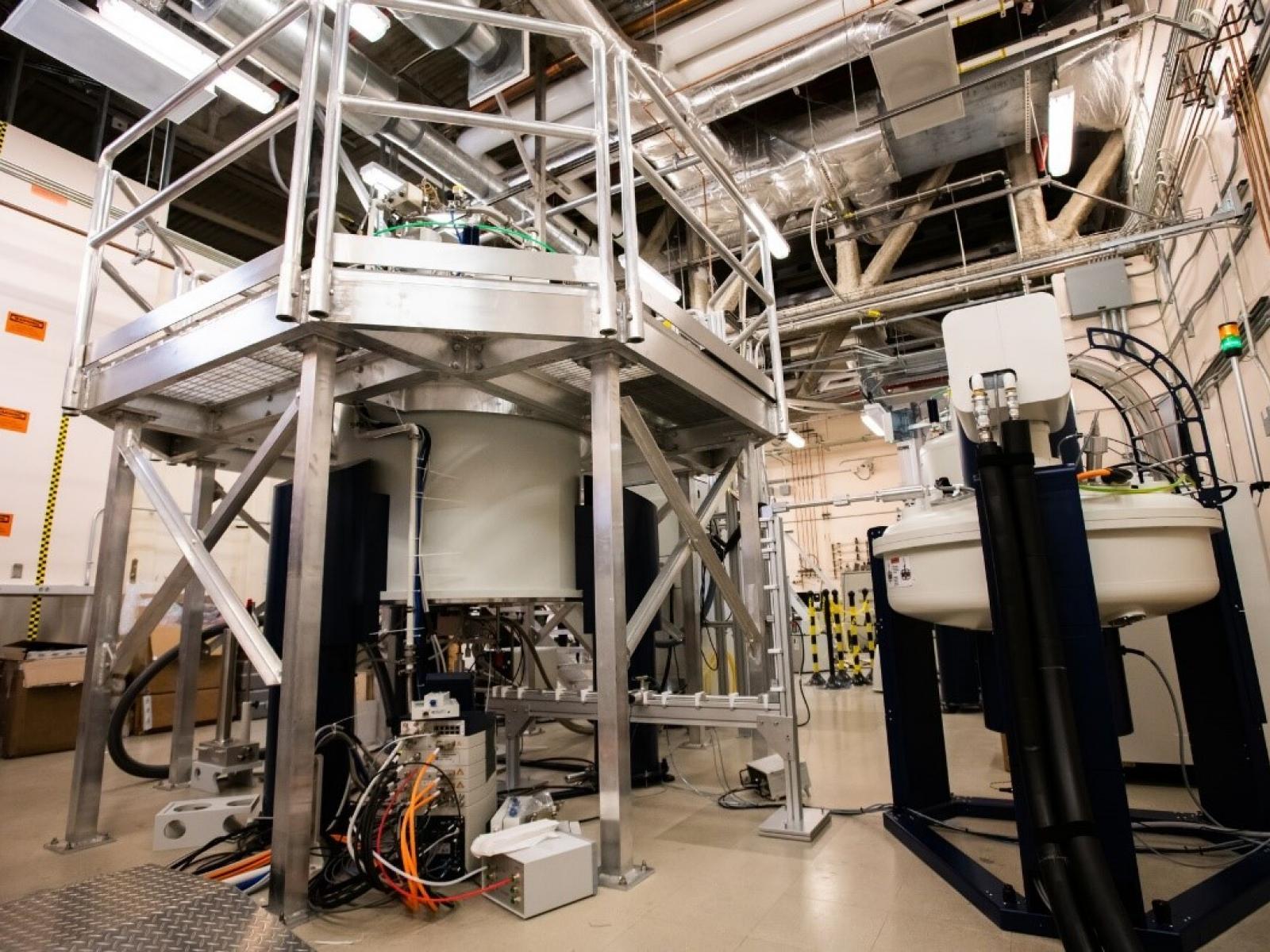Dynamic Nuclear Polarization-Nuclear Magnetic Resonance Spectrometer
United States

This high-field dynamic nuclear polarization-nuclear magnetic resonance (DNP-NMR) spectrometer provides PNNL with powerful experimental capabilities for taking NMR experiments to a new level of sensitivity and selectivity. Researchers use NMR spectroscopy to obtain physical and chemical information from sites that play critical roles in catalysis, battery functioning, mineral transformations, and more. NMR instruments can be set up to detect signals from specific, selected elements (e.g., carbon, silicon, or phosphorous) present in the sample and can provide information about the environment of the atoms of interest.
The DNP-NMR uses two different magnets—a traditional NMR magnet and an additional gyrotron magnet that produces microwaves—to amplify the signals from a material of interest by up to a factor of one hundred or more. In experiments, the microwaves interact with small molecule radicals mixed with the sample. The strength of a signal, called polarization, is transferred from the radicals to the nuclei of other atoms, which makes them easier to observe using more conventional measurements within the traditional NMR magnet.
Research Application
- The addition of DNP amplifies normal levels of signals to allow analysis of low concentrations of species or those with naturally weak NMR signals.
- DNP-NMR applications include studying molecules reacting at surfaces in catalysis or materials, or probing complex structures such as battery electrolytes or bioinspired materials.
- Samples do not need to be isotopically labeled for measurements.
- The 800 MHz DNP-NMR exclusively operates on solid samples.
- The instrument can perform standard solid-state NMR measurements between -50 and 300 °C.